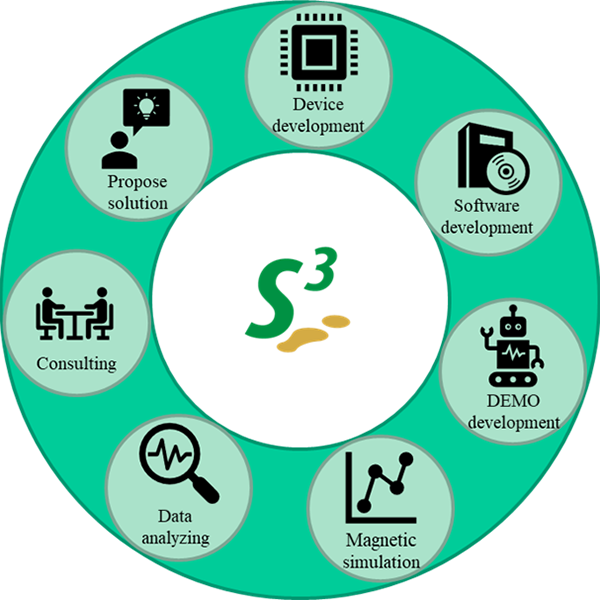Solve issues in design like a consultant
Tri-axis Magnetic Sensors
In addition to AKM, there are several tri-axis magnetic sensors around the world. Then, which sensor should we select? One of the important factors to consider is the sense of security and usability that cannot be determined only from the specifications on the data sheet.
In this section, we introduce AKM's ability to propose tri-axis magnetic sensors that have been solved a variety of issues.
"Solid track record"
AKM's tri-axis magnetic sensors were developed by Asahi Kasei Electronic Components Research Laboratory (established in 2003) for the purpose of researching and developing new value-added electronic components.
We began our development of tri-axis magnetic sensors by breaking away from the traditional development process of first developing a numerically superior sensor and then looking for a market where it could be used.
- Instead of searching for markets based on the performance of the sensor itself, we started by thinking about applications, considering the environmental conditions that users want to measure, and then devising an algorithm for extracting the information users desire.
- We designed IC circuits with the optimal architecture for the signal processing that was needed (original high-precision characteristic correction circuits, low-consumption and low-noise circuits, and high-speed magnetic field sampling circuits), and then selected the sensors that were optimally suited for them.
Instead of making our main priority the improvement of sensor performance, we focused on why customers would be performing sensor measurement. This enabled us to take the lead in developing the technologies necessary for user applications.
As one of these efforts, since the early days of the smartphone market, we have provided electronic compasses that use tri-axis magnetic sensor technology for "heading up" views in navigation applications. These electronic compasses have been used extensively.
As a result, our electronic compasses are used in over half of all model smartphones with electronic compasses worldwide, and we have developed extensive expertise and an overwhelming market share.
Our long track record of stably supplying the market since the mid-2000s is another strength of our tri-axis magnetic sensors.
Tri-axis magnetic sensors are increasingly being used in a wide range of applications, including foldable smartphone open/close angle detection, pop-up camera position detection, window open/close detection, and magnetic non-destructive testing.
"Extensive proposal strengths" (Brand Technology + Advantage)
We are not just a developer of conventional "sensor devices (hardware)."
Based on an accurate understanding of the issues customers face, we provide technical consultation backed by our many years of experience and offer optimal proposals that encompass mechanisms and layouts.
In addition to theoretical analysis using magnetic simulations, we can use customers' prototypes as needed or create our own basic demonstration models to perform simple verification in-house. This assists us in verifying the performance of actual devices, including factors which may not be envisioned by simulations, and in identifying potential issues.
In some cases, we also develop our own software (algorithms) and provide them for test use in customer prototypes to help solve the problems customers face.

Recommend
Solutions
If you would like to know more about how AKM can solve problems, please click below links.
Applications
If you would like to consider proper products from application examples, please click below links.
Products
For more detailed information about each product series, and for selection of specific products, please click below links.










